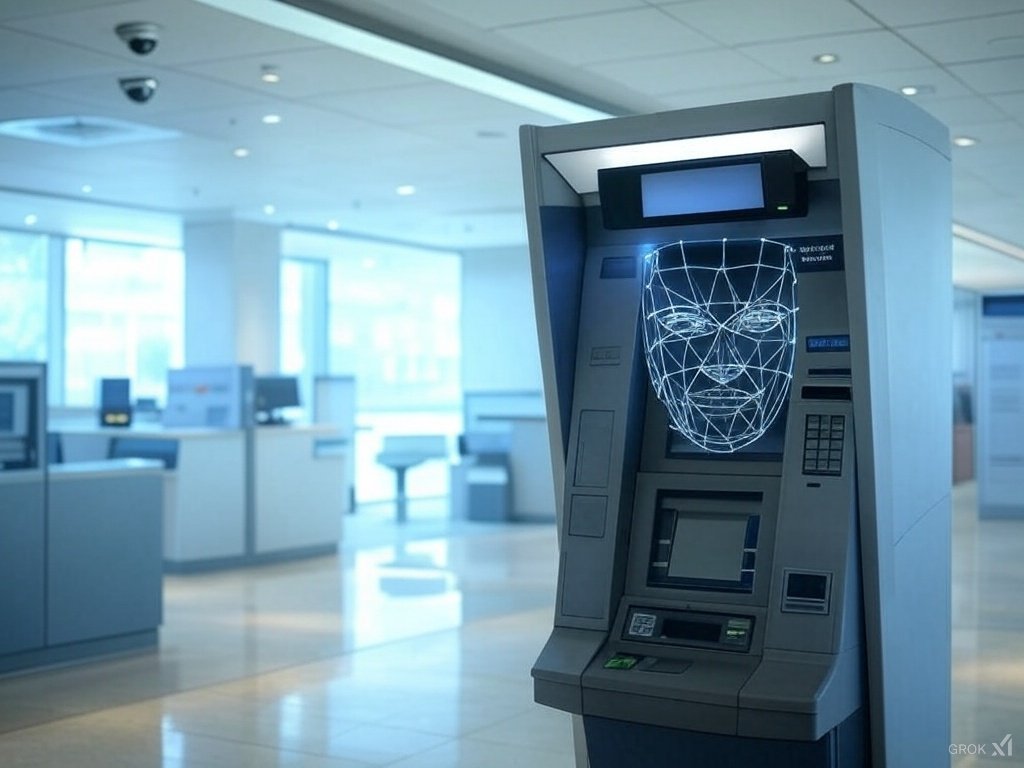AI Surveillance: Revolutionizing Banking Security & Fraud Detection

The banking and finance sector faces an ever-evolving landscape of threats, from sophisticated cyberattacks to traditional forms of fraud. Traditional security measures often fall short in detecting and preventing these nuanced crimes. Smart surveillance, powered by artificial intelligence (AI), offers a proactive and efficient approach to fraud detection, enhancing security across various banking operations. This article explores how AI-powered video analytics, facial recognition, and insider threat monitoring are revolutionizing security in banking and financial institutions.
In today's financial world, the stakes are incredibly high. Financial institutions are constantly targeted by increasingly sophisticated and relentless threat actors. Protecting assets, customer data, and maintaining public trust requires more than just traditional security systems. It demands intelligent solutions that can anticipate, identify, and neutralize threats in real-time. That's where the integration of AI-powered smart surveillance comes into play, providing an advanced layer of protection against a wide range of fraudulent activities.
This article dives deep into the transformative role of AI in banking security, covering applications like ATM surveillance, customer identification through facial recognition, and the crucial detection of insider threats. We'll examine real-world examples and discuss the practical benefits of adopting these cutting-edge technologies, offering a comprehensive understanding of how AI can safeguard financial institutions in the modern era.
The Growing Need for Advanced Fraud Detection
Financial fraud is a significant and growing concern, costing institutions billions of dollars annually. Traditional fraud detection methods often rely on manual reviews and rule-based systems, which are reactive rather than proactive. These systems struggle to keep up with the sophistication of modern fraud schemes. This results in delayed responses, increased losses, and potential damage to the institution's reputation.
Advanced fraud detection, particularly through AI-powered smart surveillance, provides a more dynamic and responsive solution. These systems use machine learning algorithms to analyze vast amounts of data, identify patterns, and detect anomalies that may indicate fraudulent activity. By continuously learning and adapting to new threats, AI-driven surveillance offers a significant advantage over traditional methods.
The integration of AI into surveillance systems allows for real-time threat assessment, enabling institutions to take immediate action to prevent or mitigate fraud. Furthermore, the proactive nature of these systems means they can identify potential threats before they materialize, reducing the risk of financial losses and reputational damage. This is particularly critical in an environment where customer trust is paramount.
AI-Powered Video Analytics for Enhanced ATM Security
ATMs are prime targets for various types of fraud, including card skimming, cash trapping, and physical attacks. Traditional ATM surveillance systems often provide limited visibility and require manual monitoring, making it difficult to detect and respond to these threats effectively. AI-powered video analytics transforms ATM security by providing real-time monitoring and automated threat detection.
AI-powered video analytics can analyze video feeds from ATM cameras to detect suspicious activities, such as loitering, unusual movements, or the presence of skimming devices. For instance, the system can recognize if someone is spending an unusually long time at the ATM or if they are attempting to tamper with the card reader. When suspicious behavior is detected, the system can automatically alert security personnel, enabling them to take immediate action.
Moreover, AI can enhance the clarity of video footage, even in low-light conditions, ensuring that critical details are captured. This is particularly useful for identifying perpetrators after a fraudulent event has occurred. By providing comprehensive and intelligent surveillance, AI-powered video analytics significantly enhances ATM security, protecting both the institution and its customers.

Real-time Threat Detection
AI algorithms analyze video feeds in real-time, identifying and alerting security personnel to suspicious behavior around ATMs. This includes detecting unusual loitering, potential skimming device installations, or physical tampering attempts.
Enhanced Video Quality
AI improves video clarity, particularly in low-light conditions, ensuring that crucial details are captured for identification purposes and evidence gathering.
Facial Recognition for Customer Identification and Security
Facial recognition technology is increasingly used in banking to enhance customer identification and security. By analyzing facial features, these systems can verify the identity of customers accessing accounts or conducting transactions. This adds an extra layer of security, preventing unauthorized access and reducing the risk of identity theft.
In branch locations, facial recognition can be used to greet customers by name, provide personalized service, and alert staff to potential security risks. For example, if a known fraudster enters the branch, the system can immediately notify security personnel, allowing them to take appropriate action. This proactive approach can help prevent fraudulent activities before they occur.
Facial recognition is also valuable in online banking. By requiring customers to verify their identity through facial scans, institutions can prevent unauthorized access to accounts. This is particularly useful in cases where passwords have been compromised or stolen. The technology offers a seamless and secure way to ensure that only authorized individuals can access sensitive financial information.
Secure Customer Authentication
Facial recognition provides a secure and convenient method for customer authentication, both in-branch and online, reducing the risk of identity theft and unauthorized access.
Personalized Customer Service
In branch locations, facial recognition can enhance customer service by enabling staff to greet customers by name and offer personalized assistance.
Detecting Insider Threats with AI Surveillance
Insider threats, where employees abuse their access to commit fraud or steal sensitive information, pose a significant risk to financial institutions. Detecting these threats can be challenging, as insiders often have legitimate access to the systems and data they target. AI-powered surveillance can help identify and prevent insider threats by analyzing employee behavior and detecting anomalies that may indicate fraudulent activity.
AI algorithms can monitor employee access patterns, track data usage, and analyze communication patterns to identify suspicious behavior. For example, if an employee suddenly begins accessing files or systems they don't normally use, or if they are communicating with known fraudsters, the system can flag this activity for further investigation. By continuously monitoring employee behavior, AI can detect subtle signs of insider threats that might otherwise go unnoticed.
Furthermore, AI can be used to monitor physical access to sensitive areas within the institution. By analyzing video feeds and access logs, the system can detect unauthorized entry or unusual movement patterns. This can help prevent employees from accessing areas they shouldn't be in or from removing sensitive documents or equipment. The integration of AI into surveillance systems provides a comprehensive approach to detecting and preventing insider threats, protecting the institution from significant financial and reputational damage.
Behavioral Analysis
AI algorithms analyze employee behavior patterns, including access logs, data usage, and communication patterns, to identify anomalies that may indicate insider threats.
Physical Access Monitoring
AI monitors physical access to sensitive areas, detecting unauthorized entry or unusual movement patterns to prevent employees from accessing restricted zones or removing sensitive materials.
Benefits of Implementing AI Smart Surveillance
Implementing AI smart surveillance in banking and financial institutions offers numerous benefits. These systems provide enhanced security, improved efficiency, and reduced costs, making them a valuable investment for any organization looking to protect its assets and reputation.
- Enhanced Security: AI-powered surveillance provides real-time threat detection and proactive fraud prevention, significantly reducing the risk of financial losses and reputational damage.
- Improved Efficiency: Automated monitoring and analysis reduce the need for manual reviews, freeing up security personnel to focus on more critical tasks.
- Reduced Costs: By preventing fraud and reducing the need for manual monitoring, AI-powered surveillance can significantly reduce operational costs.
- Scalability: AI systems can easily scale to accommodate the changing needs of the institution, providing a flexible and cost-effective security solution.
- Compliance: AI-powered surveillance can help institutions comply with regulatory requirements, ensuring that they meet the necessary security standards.
By leveraging the power of AI, financial institutions can create a safer and more secure environment for their customers and employees, while also improving their bottom line.
AI-powered smart surveillance is transforming the banking and finance sector, providing advanced fraud detection and enhanced security. By leveraging video analytics, facial recognition, and insider threat monitoring, institutions can proactively protect their assets, customers, and reputation. As the threat landscape continues to evolve, the adoption of AI-driven security solutions will become increasingly critical for maintaining a safe and secure financial environment.
The future of banking security lies in the intelligent application of AI. Institutions that embrace these technologies will be better equipped to prevent fraud, mitigate risks, and maintain the trust of their customers. Embracing innovation in AI surveillance is no longer just an option, but a necessity for survival and growth in today’s dynamic financial ecosystem.
Ready to enhance your fraud detection capabilities? Explore our Sentinel open-source project to learn how you can implement AI-powered surveillance in your organization.